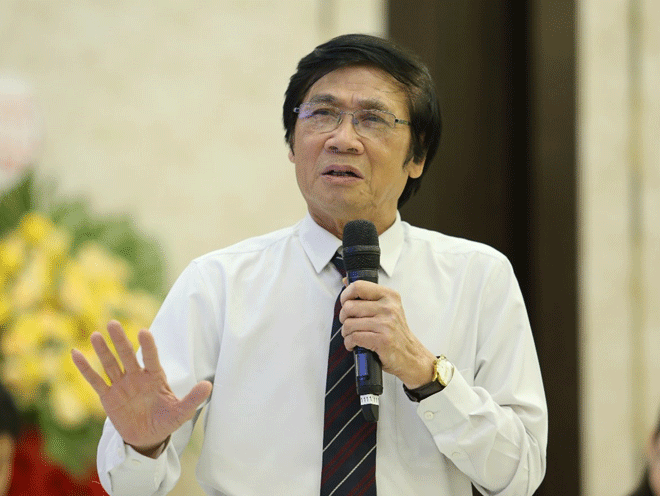Suggestions for developing Da Nang into a livable city
Architect Tran Ngoc Chinh, Chairman of the Viet Nam Urban Development Planning Association and former Deputy Minister of Construction, recently spoke to Da Nang Newspaper about Da Nang’s advantages and his suggestions to make the city worth-visiting and worth-living place in the near future.
According to him, Da Nang has great potential to become a worth-visiting and worth-living city.
 |
| Architect Tran Ngoc Chinh |
In particular, despite its area of only about 1,285km2, Da Nang is one of the five centrally-governed cities and has an important position and role in Central Viet Nam. It is blessed with a favourable geographical position as boasting beautiful mountains, romantic rivers, clean beaches, steep hills, and narrow coastal plains.
The locality has full important transport infrastructure such as deep-water seaports of Tien Sa Port and soon-to-be-developed Lien Chieu Port, Da Nang International Airport - the third busiest international airport in Viet Nam, roads, expressways, railways and national high-speed railways.
When visiting the central coastal city, you will be astounded by the amazing natural landscape with beautiful white-sand beaches, the Da Nang Bay surrounded by the Hai Van mountain range, and the Son Tra Peninsula dubbed a 'green lung' and home of the 'Queen' of the primate species.
Additionally, Da Nang has an advantage over other cities when the Han River flows parallel to the coast, creating urban areas on both sides. The traffic system connecting the two sides of the river is created by bridges with special architecture. Notably, the annual Da Nang International Fireworks Festival highlights the value of the landscape of the Han River.
To the west of Da Nang, there are mountain ranges, both to shield the wind from the west, and as a fulcrum for the city.
The Sun World Ba Na Hills tourist area really becomes a milestone for the destination of Da Nang thanks to the temperate climate with four seasons within a single day, stunning check-in points and a spectacular view of the city.
 |
| The annual International Fireworks Festival has become a trademark of Da Nang in terms of its own unique cultural products and tourism services. Photo: KIM LIEN |
What should Da Nang continue to do to become a worth-visiting and worth-living place?
Mr. Chinh remarks Da Nang is a well-planned and well-managed city containing many values, creating a mark and foundation for a modern urban area.
He, however, stresses the need for the city to make more efforts to turn itself into a worth-visiting and worth-living place.
The architect underlines a must-do to develop a central urban space in right heart of the city with high-class hotels, commercial areas, services, banks and financial centres in a bid to form a busy commercial and tourist centre, hereby evoking the vitality of a tourist city.
He undertakes a necessity for the city to continue to develop complete new urban areas right in the heart of the big city which will consist of many small towns in districts with different nuances and functions.
According to the plan, in the future, the city will have about 2.5 million people. Therefore, Da Nang must have a modern public transport system, including an urban railway system and smart means of transport. Also, there must be a connection between underground works in the heart of the city.
It is necessary for the city to organise traffic to connect with Hue City in Thua Thien Hue Province, or Hoi An Ancient Town, My Son Sanctuary and Dien Ban in Quang Nam Province by a modern public transport system and local traffic network.
As a hub in Central Viet Nam and the country as a whole, in addition to the Museum of Cham Sculpture, Da Nang needs to build museums with vitality and cultural values such as an ocean museum and a contemporary cultural museum. In addition, a high-class opera house, and large-scale and unique sports works should be built in the city.
Last but not least, it is necessary for the city to build a marina to position the brand for a city with modern vitality and global integration.
Reporting by Architect Tran Ngoc Chinh - Translating by M.DUNG